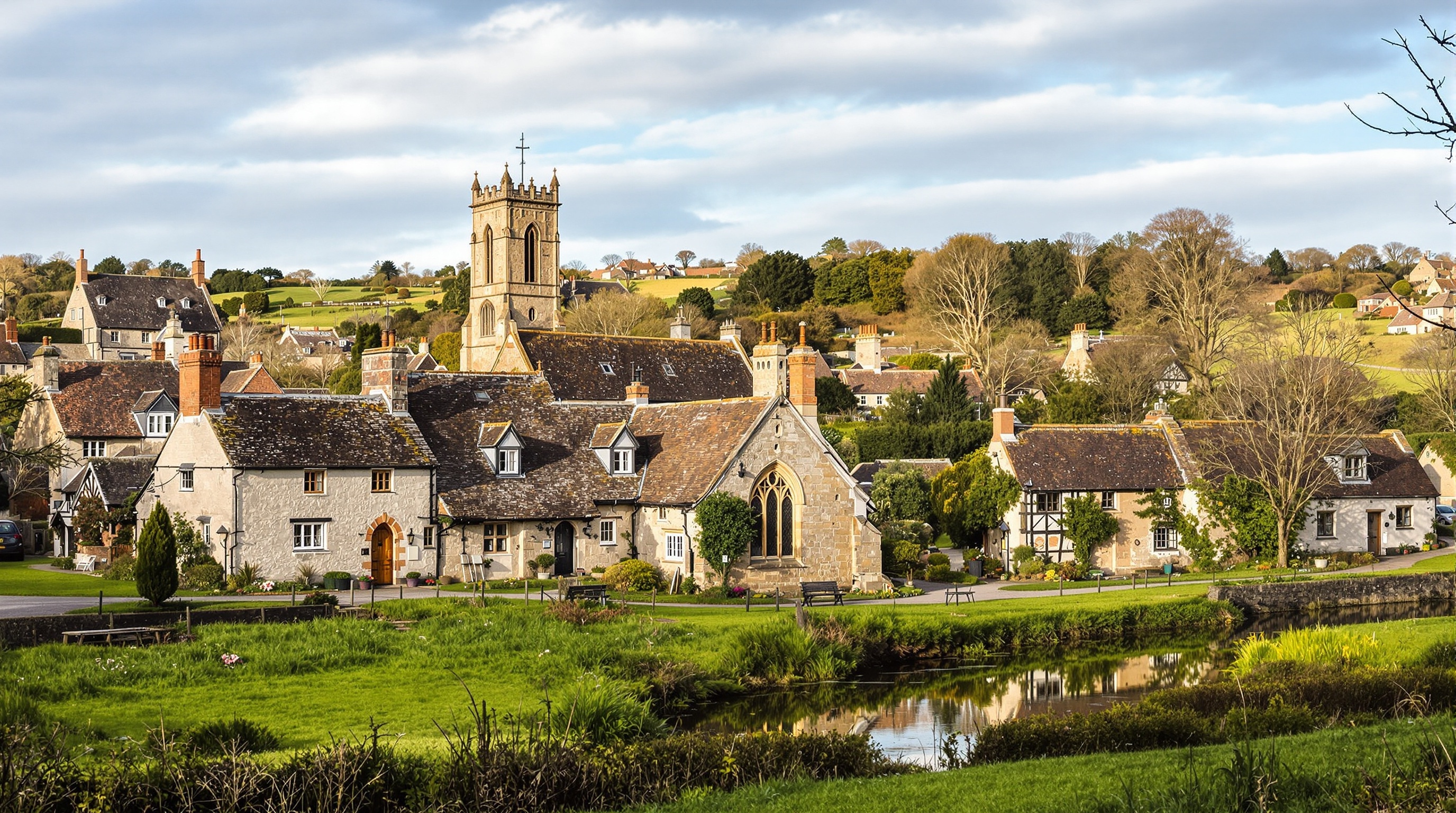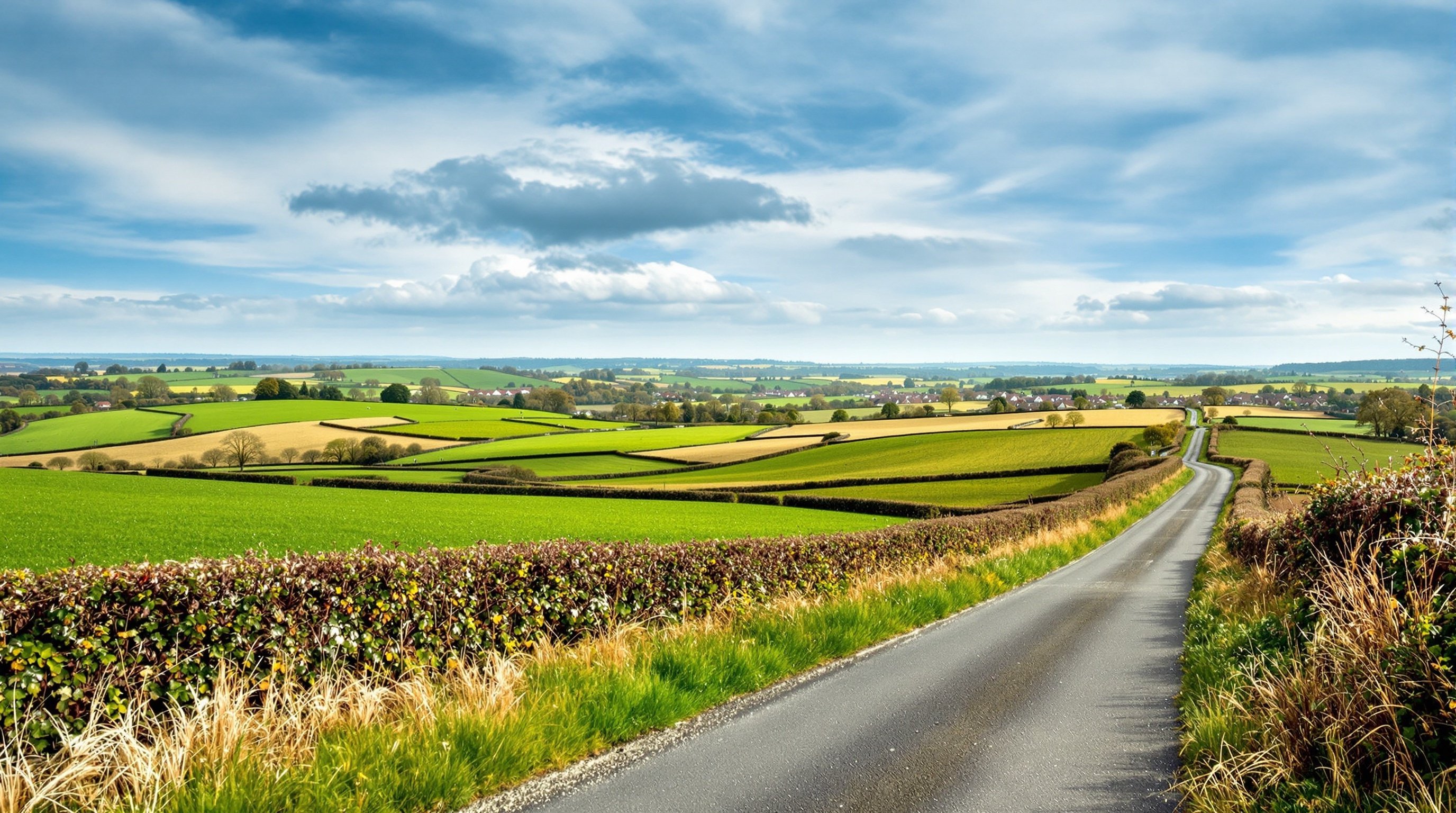
Glazebury Cheshire: A Historic Village with 12th Century Roots
Discover the charming village once known as Hurst, with its medieval church and authentic English countryside character.
Glazebury traces its roots to the 12th century, when this historic Cheshire village was known as Hurst before Civil War-era changes. Today, the settlement forms part of Culcheth and Glazebury civil parish, maintaining authentic English village character in the Warrington borough area.
The village preserves architectural heritage through its medieval church and traditional buildings whilst supporting a small resident population. This balance between preservation and modern life creates the quintessential rural English atmosphere that draws heritage enthusiasts and those seeking countryside living.
Historical Origins and Name Change

The settlement existed in the 12th century under the name Hurst, documented in medieval records and church archives. The name Glazebury emerged during or after the English Civil War, though historians debate the exact reasons and timing of the change.
This name evolution reflects broader social upheavals of the 17th century, when political and religious conflicts reshaped communities across England. Glazebury's transformation represents one small piece of this tumultuous period's legacy.
Archaeological evidence suggests continuous occupation extending beyond written records. Field patterns, building foundations, and artefact discoveries indicate the site's importance in the medieval agricultural landscape.
The village's location along historic routes between larger settlements contributed to its establishment and survival. These connections brought trade, news, and outside influences whilst the community maintained distinct local identity.
St Thomas' Church

The village church, dedicated to St Thomas, anchors Glazebury both physically and socially. The building incorporates architectural elements spanning several centuries, revealing layers of construction, renovation, and adaptation.
Medieval portions survive within later modifications, with Victorian restoration work particularly evident in the nave and windows. This architectural palimpsest demonstrates how communities continuously adapted religious buildings to contemporary needs and tastes.
Church records provide invaluable genealogical information for families tracing Glazebury connections. Baptism, marriage, and burial registers document village life through centuries, capturing both routine events and extraordinary occurrences.
The churchyard contains graves spanning 300+ years, with headstones revealing naming patterns, life expectancies, family structures, and memorial customs. These silent witnesses offer tangible connections to generations who shaped the village.
Rural Character and Countryside
Glazebury maintains distinctly rural character despite proximity to larger towns. Agricultural land surrounds the settlement, with working farms continuing traditions extending back to the village's founding.
Country lanes wind through the area, lined with hedgerows and mature trees creating the classic English countryside aesthetic. These roads suit walkers, cyclists, and equestrians seeking quiet routes away from main traffic arteries.
The Cheshire Plain's gently rolling topography defines the landscape, with field patterns reflecting centuries of agricultural use. Modern farming coexists with conservation efforts protecting hedgerows, ponds, and woodland remnants.
Wildlife benefits from the mixed agricultural landscape. Field margins, hedgerows, and small woodlands create habitat corridors supporting birds, small mammals, and invertebrates increasingly scarce in more intensively farmed areas.
Community and Population
Glazebury's small population creates tight-knit community dynamics where residents generally know neighbours and local families span multiple generations. This social structure contrasts sharply with more transient suburban areas.
The village lacks extensive commercial development, with residents travelling to nearby towns for shopping and services. This dependence on external facilities shapes daily life and makes car ownership practically essential.
Community events centre around the church and village hall, with traditional celebrations like harvest festivals and Christmas services maintaining continuity with the past. These gatherings strengthen social bonds and preserve customs.
The demographic skews towards families and retirees seeking village life, with younger adults often leaving for employment and urban amenities. This pattern reflects wider rural population trends across Britain.
Location Within Culcheth and Glazebury Parish
Glazebury forms part of Culcheth and Glazebury civil parish alongside the larger settlement of Culcheth. This administrative unit sits within Warrington borough, creating layered governance structures affecting planning, services, and taxation.
The parish system reflects medieval territorial organisation adapted to modern local government. This continuity links contemporary administration to centuries-old boundaries, though specific responsibilities have evolved dramatically.
Culcheth, as the larger settlement, provides more extensive facilities that Glazebury residents access. This relationship benefits smaller villages by offering nearby amenities without requiring their own commercial centres.
The boundary between traditional Cheshire and modern administrative areas creates some confusion. Historically Cheshire, the area now sits within Warrington borough and ceremonial county changes implemented in 1974 local government reorganisation.
Access and Visiting
Glazebury's rural location means limited public transport, with car access most practical for visitors. The village sits roughly equidistant between Warrington and Leigh, reachable via country roads requiring careful navigation.
Visitors come primarily for heritage interest, countryside walks, or family history research. The village offers authentic rural experience without commercialisation or tourist infrastructure found at more promoted destinations.
Photography enthusiasts value the unspoilt village views and countryside vistas. Traditional architecture, mature trees, and agricultural landscapes provide subjects increasingly rare in modern Britain.
Respect for resident privacy remains important given the village's small size and limited visitor facilities. The church welcomes visitors during open hours, whilst footpaths provide countryside access without intruding on private land.
Frequently Asked Questions
Where is Glazebury?
Glazebury is a historic village in the Warrington borough area, historically part of Cheshire. It sits between Warrington and Leigh, forming part of Culcheth and Glazebury civil parish.
How old is Glazebury?
Glazebury dates to at least the 12th century, originally known as Hurst. The settlement gained its current name during or after the English Civil War, making it over 800 years old.
Is Glazebury in Cheshire?
Historically yes, Glazebury was in Cheshire. The 1974 local government reorganisation placed it within Warrington borough, though it retains connections to Cheshire heritage and culture.
What is there to do in Glazebury?
Glazebury offers countryside walks, heritage exploration through St Thomas' Church, and authentic rural English village atmosphere. It suits visitors seeking quiet countryside rather than commercial attractions.
Can you visit Glazebury church?
Yes, St Thomas' Church welcomes visitors during open hours. The building features medieval and Victorian architecture, with church records available for genealogical research by arrangement.
Why did Hurst become Glazebury?
The name change from Hurst to Glazebury occurred during or after the English Civil War. Historians debate the exact reasons, but it reflects the social upheaval of 17th century England.